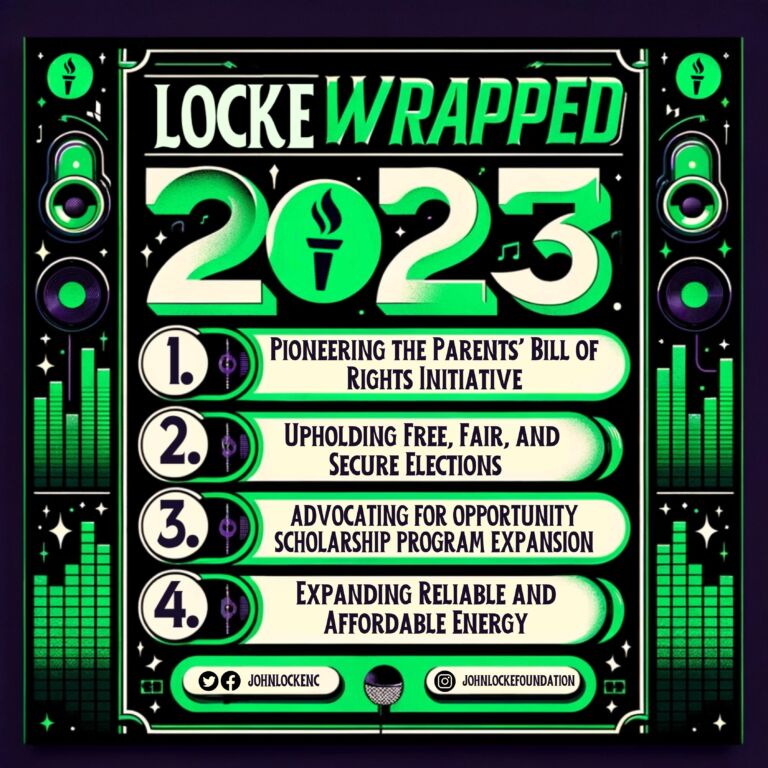Earlier Today, JLF’s Vice President for Research & Director of Education Studies, Dr. Terry Stoops, published a research brief on the growth of student enrollment in private, charter, and home schooling. In his brief, he exemplifies the misconceptions many people have about school choice with a quote from the News & Observer Editorial Board:
“What’s happening in North Carolina is that a concerted effort by the Republican-controlled General Assembly is starving public schools of resources and encouraging the expansion of educational options that lack standards and oversight.”
Dr. Stoops refutes the idea that the General Assembly is starving public schools:
While Republican lawmakers have expanded educational options, they have also spearheaded initiatives to reduce class sizes, improve reading in the early grades, and boost principal pay. Public school expenditures have increased by around $1,000 per student between 2010 and 2018, while average teacher pay is nearly $9,000 higher today than it was in 2014.
Dr. Stoops also notes that, in order to decrease per-pupil expenditure in traditional public schools, the General Assembly would have to decrease per-pupil spending in charters concurrently. Stoops explains:
If the General Assembly chose to starve public schools of resources, then charters would be collateral damage. Public charter school funding is not a separate line item in the state budget. Rather, charters and districts receive funding from a shared pool of state appropriations, and it is distributed based on the number and characteristics of students they enroll. The N.C. Department of Public Instruction determines how much charters receive based on the dollars per student of the school district in which the charter school is located (unless it is a new charter school). Simply put, if lawmakers starved districts, then they would have starved charters too.
Stoops points out that, because charters do not receive local government funding for capital expenditures and debt repayment like traditional public schools, charter schools have less money available to them for instructional programs and supplies. Stoops writes:
Nevertheless, parents are willing (and often waiting) to send their children to charter schools that typically have fewer resources than their assigned district school.
In this way, charter schools are more “starved” for resources than the public schools are, as the News & Observer claims.
Read the full brief here. Learn more about PreK-12 Education here.


